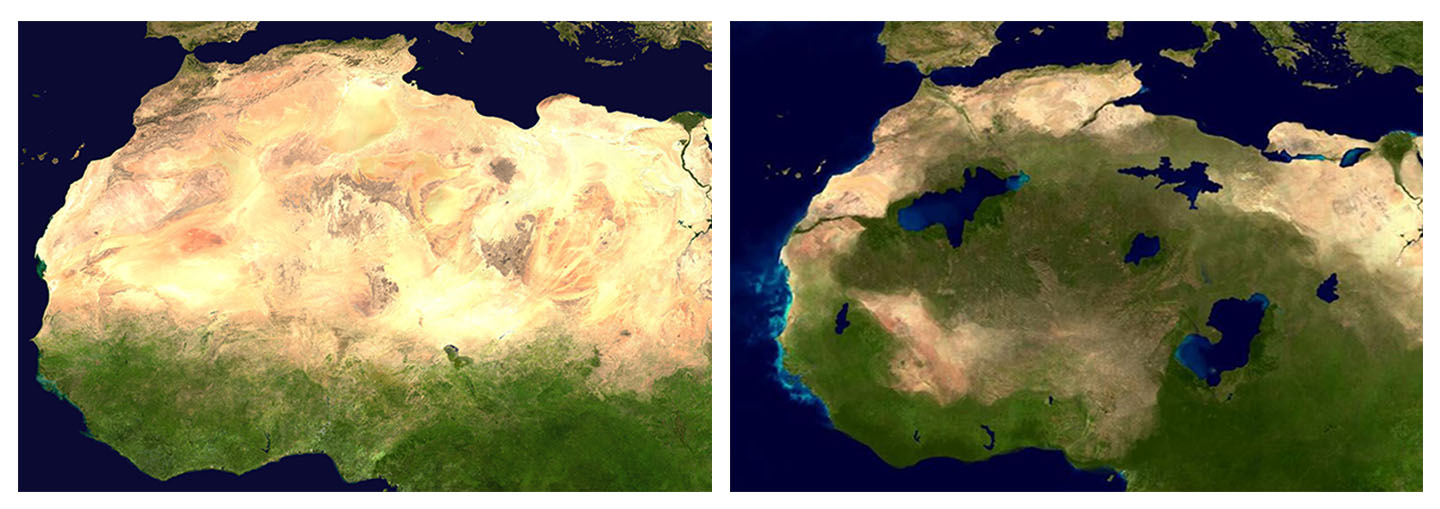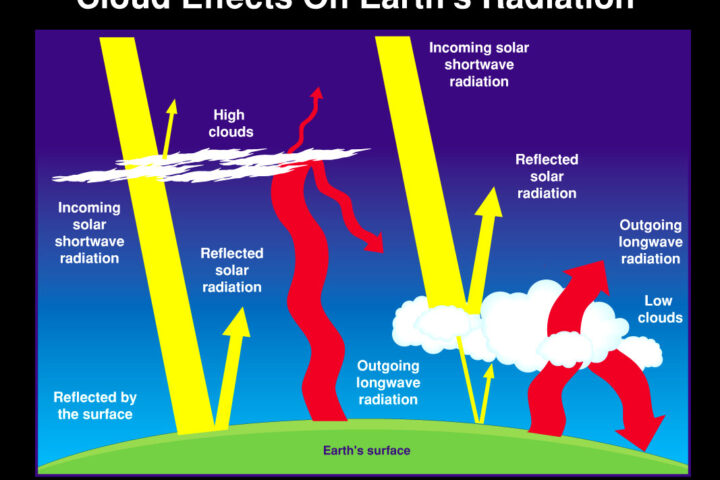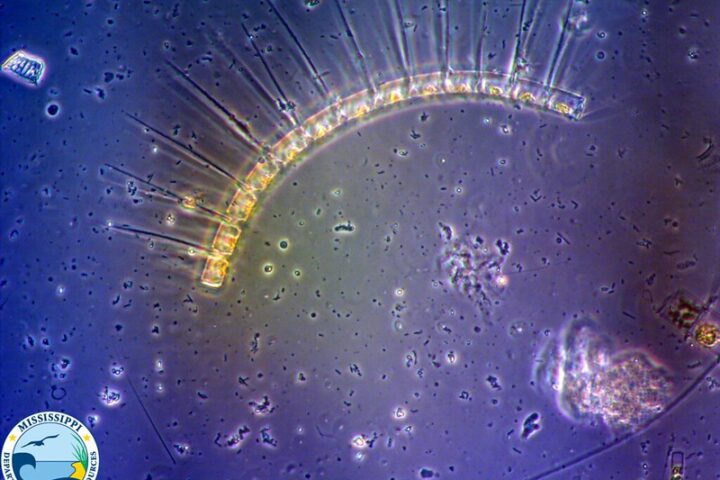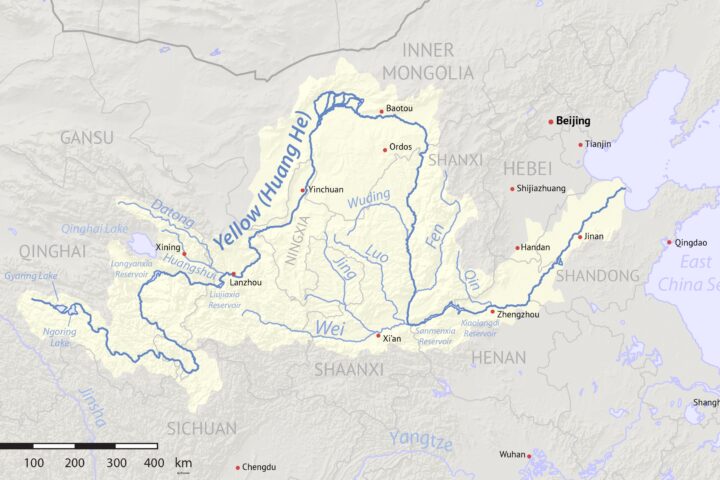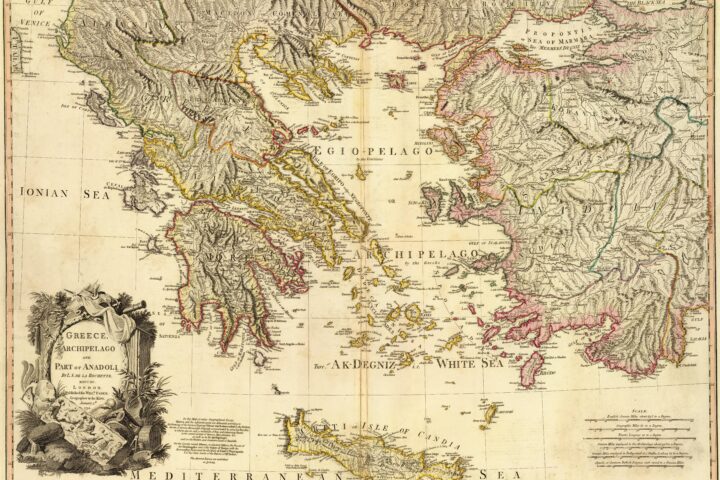Source: green-sahara-climate-enigma
Introduction
The Sahara Desert, a vast expanse of sand and rock, is one of the most inhospitable places on Earth. Yet, this barren wasteland was once a lush, green savannah teeming with life. This astonishing transformation, a testament to the dynamic nature of our planet’s climate, has captivated scientists and the public alike. In this article, we will delve into the evidence supporting this incredible claim, explore the potential causes of this dramatic shift, and consider the implications for our understanding of climate change.
The Sahara: A Desert Transformed
Today, the Sahara Desert is the world’s largest hot desert, covering an area of approximately 9.2 million square kilometers. It is characterized by extreme temperatures, scarce rainfall, and a landscape dominated by sand dunes and rocky plateaus. However, this was not always the case.
Geologists and paleoclimatologists have uncovered compelling evidence that the Sahara was once a very different place. Fossil records, including those of aquatic organisms and terrestrial plants and animals, indicate the presence of abundant water and vegetation in the region. Lake beds, river channels, and pollen analysis have provided concrete proof of a once-thriving ecosystem.
One of the most striking discoveries is the presence of megalithic structures, such as those found in the Gilf Kebir plateau in southwestern Egypt. These structures suggest the existence of complex societies with agricultural practices, which would have been impossible without a reliable water source and fertile land.
The Green Sahara Hypothesis
The prevailing theory to explain the transformation of the Sahara from a green savannah to a desert is the Earth’s orbital variations. These variations, known as Milankovitch cycles, affect the amount of solar radiation reaching different parts of the planet over long periods.
The Earth’s orbit is not a perfect circle, but an ellipse. The shape of this ellipse changes over time, affecting the distance between the Earth and the sun. Additionally, the Earth’s axis is tilted at an angle, and this tilt also varies over time. These orbital changes influence the distribution of solar energy across the planet, leading to fluctuations in temperature and precipitation patterns.
During certain periods, the Earth’s orbit and tilt combine to increase the amount of solar radiation reaching the northern hemisphere during summer. This increased solar energy leads to higher temperatures, increased evaporation, and ultimately, increased rainfall. As a result, the Sahara region experienced a wetter climate, supporting the growth of vegetation and the development of complex ecosystems.
The Decline of the Green Sahara
The decline of the Green Sahara began around 5,000 years ago. As the Earth’s orbit and tilt shifted, the amount of solar radiation reaching the region decreased, leading to a gradual reduction in rainfall. This decline in precipitation caused the vegetation to shrink, and the once-lush landscape began to dry out.
The loss of vegetation had a cascading effect on the environment. With less vegetation to hold the soil in place, wind erosion increased, leading to the formation of vast sand dunes. The drying climate also reduced the amount of water available for lakes and rivers, causing them to shrink and eventually disappear.
Implications for Climate Change
The story of the Green Sahara is a powerful reminder of the Earth’s climate system and its capacity for dramatic change. The transformation of this vast region from a verdant paradise to a barren desert highlights the delicate balance of factors that influence our planet’s climate.
Understanding the processes that caused the Sahara to desiccate is crucial for predicting future climate changes. By studying the past, scientists can develop more accurate models of climate variability and assess the potential impacts of human-induced climate change.
The Green Sahara also offers a cautionary tale about the consequences of environmental degradation. The loss of vegetation in the Sahara contributed to the desertification process, which has had a significant impact on the region’s ecology and human populations.
A Safari in the Sahara

Source: Safari_in_Sahara_safari-green-sahara-megafauna-history
The Green Sahara was a haven for megafauna. Imagine giant elephants, giraffes towering over acacia trees, and herds of wildebeest thundering across vast plains. Crocodiles lurked in the rivers, and fish filled the waters. Paintings found in the Tassili n’Ajjer mountains in Algeria depict this lost world, with vibrant images of animals that are now extinct in the region.
Humans thrived in this environment. Evidence suggests sophisticated hunter-gatherer societies and, later, early agricultural communities. The rock art of the Sahara is a testament to their creativity and spiritual connection to the land.
The Great Drying: A Climate Crisis
The transformation from a verdant paradise to a desolate desert was a gradual process, driven by complex interactions between the Earth’s orbit, ocean currents, and atmospheric circulation. As the Earth’s orbit changed, the amount of sunlight reaching the Sahara decreased. This led to a decline in rainfall, and the once-lush vegetation began to wither.
A tipping point was reached. As the greenery disappeared, the land became more exposed to the sun’s intense heat. This caused temperatures to rise, further accelerating the drying process. A feedback loop ensued, where the desert expanded at an alarming rate, swallowing up fertile lands.
Echoes of the Past
While the Sahara is now a harsh environment, remnants of its past can still be found. Oasis ecosystems, with their unique flora and fauna, are like green islands in a sea of sand. These oases are relics of the Green Sahara, providing crucial habitats for wildlife and supporting human life.
Underground water reserves, remnants of ancient rivers and lakes, also bear witness to the region’s wetter past. These aquifers are vital for the survival of both people and animals in the modern Sahara.
Lessons from the Sands
The story of the Green Sahara is a stark reminder of the Earth’s climate sensitivity. Our planet’s climate is a complex system, and small changes can have far-reaching consequences. The Sahara’s transformation serves as a cautionary tale about the potential impacts of climate change.
Understanding the processes that led to the desertification of the Sahara is crucial for developing strategies to combat desertification in other parts of the world. By studying the past, scientists can better predict future climate patterns and develop adaptation and mitigation measures.
The Sahara’s Future
While the Sahara is unlikely to return to its former glory, it’s essential to recognize the potential impacts of climate change on the region. Rising temperatures and altered rainfall patterns could exacerbate desertification, affecting the lives of millions of people.
Sustainable land management practices, including reforestation, water conservation, and the development of drought-resistant crops, are crucial for mitigating the effects of climate change in the Sahara. Additionally, international cooperation is essential to address the challenges posed by this vast and fragile ecosystem.
The Sahara Desert, once a vibrant oasis, is a powerful symbol of the Earth’s dynamic nature. By studying its past, we can gain valuable insights into the challenges and opportunities of the future.
Conclusion
The Green Sahara is a captivating story of environmental change on a grand scale. This once-thriving ecosystem offers valuable insights into the Earth’s climate history and the complex interplay of factors that shape our planet’s environment. As we grapple with the challenges of climate change, understanding the past can help us better prepare for the future.
By studying the Green Sahara, scientists are gaining a deeper appreciation for the Earth’s climate system and the potential consequences of human activities. The lessons learned from this ancient transformation can guide us towards a more sustainable future.
Sources:
- https://en.wikipedia.org/wiki/African_humid_period
- https://www.nature.com/scitable/knowledge/library/green-sahara-african-humid-periods-paced-by-82884405/
- https://theconversation.com/the-sahara-desert-used-to-be-a-green-savannah-new-research-explains-why-216555
- https://science.thewire.in/environment/sahara-desert-green-savannah-new-research-explains-why/

